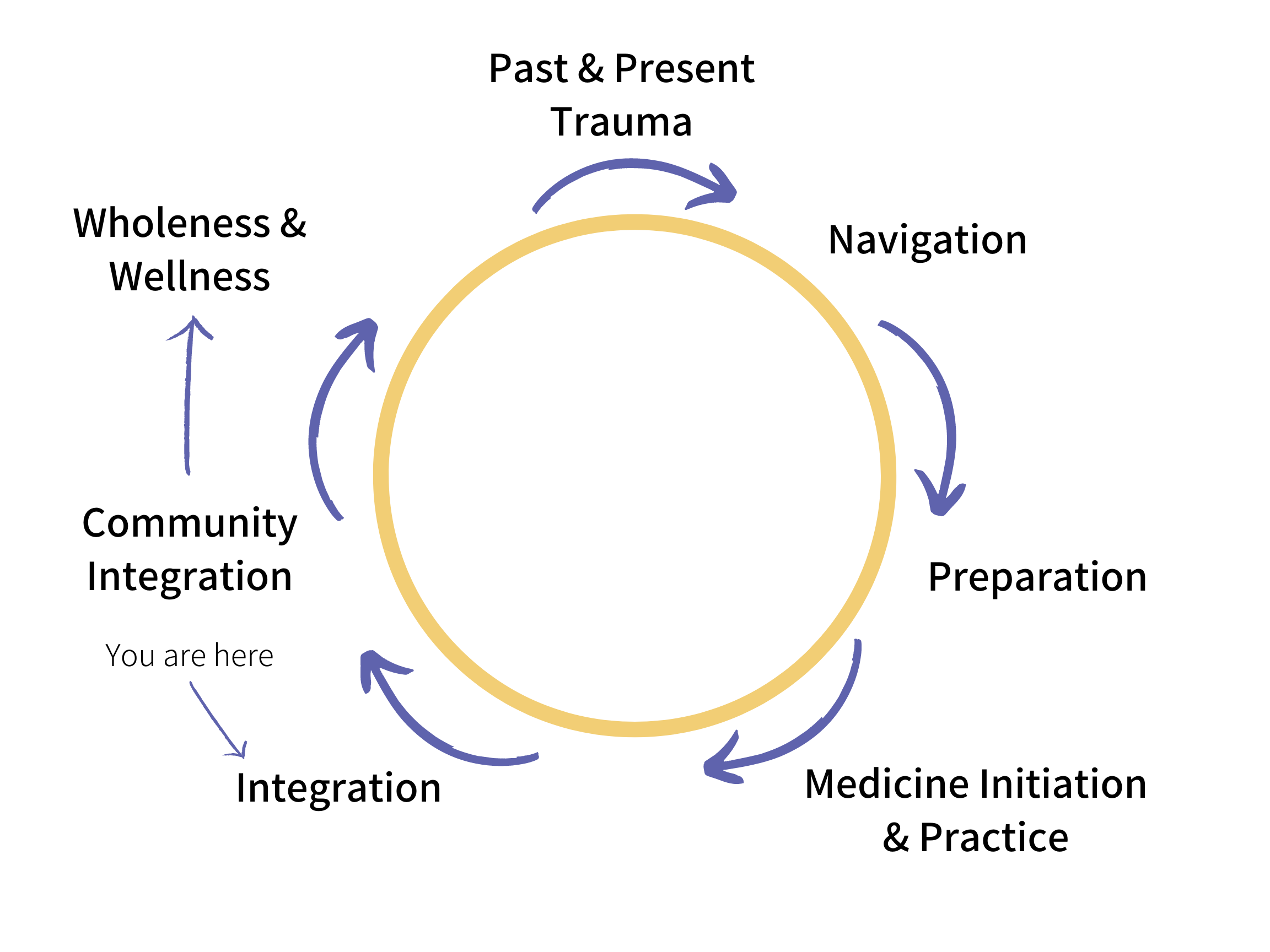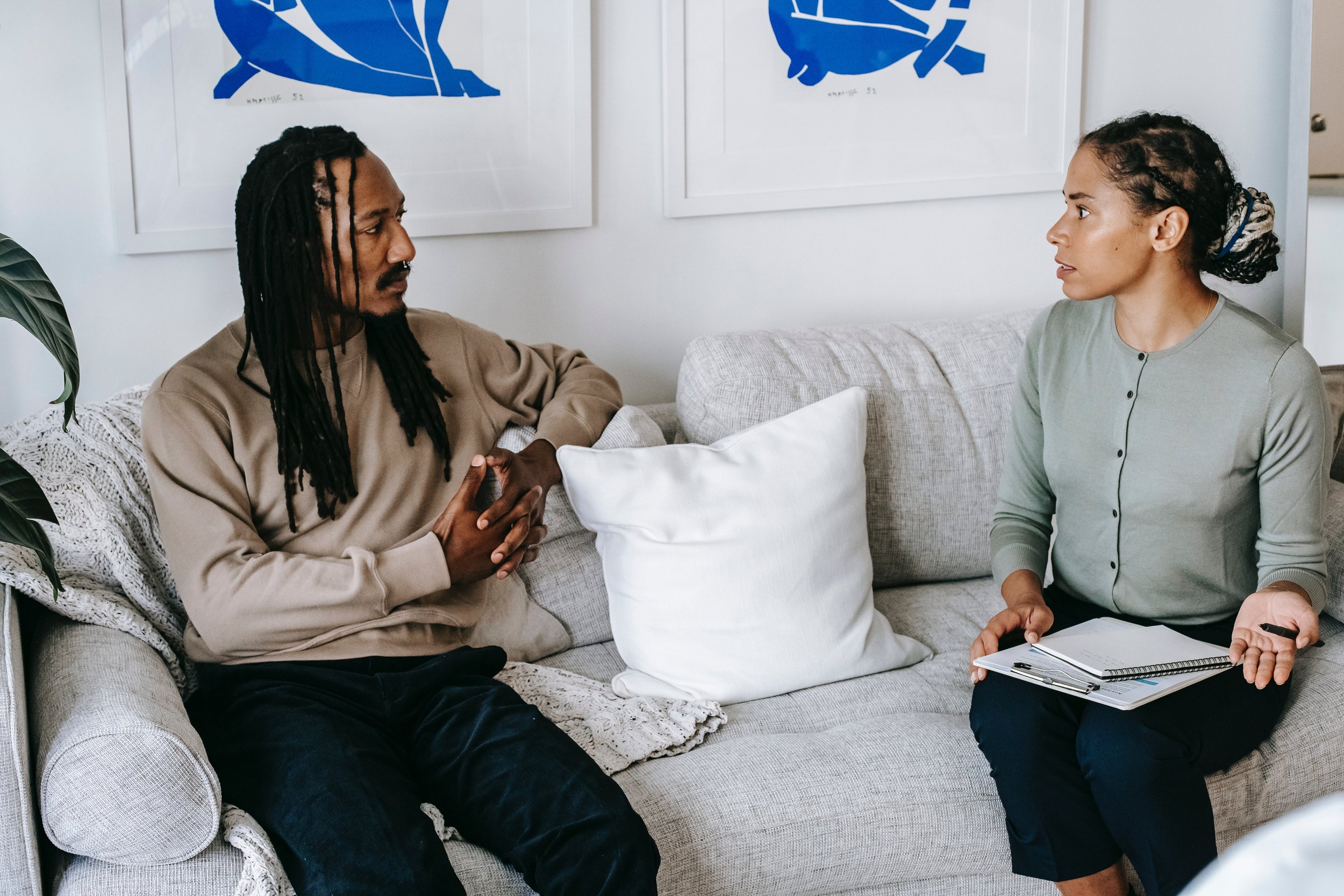Self Directed Psychedelic Healing III
Written by Barry Alexander
You have determined where you would like to venture with navigation. Through preparation you have set intentions and secured a support network to speak with after your experience. Now it is time to take the medicine. This part of the Self Directed Psychedelic Healing Series will cover general practices with the medicine, integrating the experience with an informed psychotherapist or integration specialist, and more.
One final word of caution before you go further: psychedelics are not for everyone. While this should have come up before during the navigation and preparation stage, it’s worth repeating that there are a few indications that warrant caution or complete avoidance of psychedelics as a healing modality. Specifically, if your first or second-degree relatives have a history of schizophrenia, bipolar I or II, or other psychotic disorders, you may want to abstain from using psychedelic medicine. Additionally, depending on the psychedelic, it may be illegal in your area.
Unfortunately, there is currently not enough clinical data on how psychedelics like psilocybin affect individuals with bipolar and schizophrenia to make conclusions regarding safety. While there are studies underway to answer some of these questions, seeking support groups and experienced professionals to inform yourself in the meantime is a great way to learn more. It is generally recommended to personalize and optimize one’s set and setting to help mitigate risks should you choose to proceed with a psychedelic experience. If possible, consult with a psychiatrist, pharmacist, or mental health professional about the safety of psychedelic medicine usage.
Medicine Dosage
If you have never tried psychedelic medicines, it’s important to understand the potential effect these compounds may have.. In general clinical settings, it’s typically recommended to “start low and go slow” when introducing a psychotropic medication to a patient. Start with the smallest fractional dose to see how one’s body reacts, familiarize oneself with the mental, physical, and emotional effects brought on by the medicine.
If the medicine is psilocybin in dried mushroom form, some may choose to explore a microdose of 0.1 to 0.3 grams, others may work well with 1 full gram. For a gentle introduction into a threshold-breaking perceptual experience, there are users who suggest to begin with 1 full gram. This dose should be enough to perceive the effects and provide one an introduction to future engagement with higher doses. The clinical studies typically utilize a calm and quiet place for their dose days. This is believed to enhance one’s introspective attention to the effects of the medicine to allow for greater insights to be experienced
Once you have acclimated to the medicine at low doses, you may be ready to consider larger therapeutic doses taken at sessions with a peer supporter or facilitator. In clinical trials and other practice settings, it’s never recommended to pursue a larger dose of an entheogen or psychedelic without a caring peer supporter, sitter, guide, or facilitator. If your peer supporter is not very experienced, ensure they have access to psychedelic-oriented professionals or peer support hotlines such as fireside.org. Having an experienced, compassionate person to talk to and watch over you throughout your journey can provide additional comfort and confidence, enhancing the potential for healing and growth.
According to the Johns Hopkins clinical trial, the dosage ‘sweet spot’ for recipients was 30 mg of psilocybin per 70kg. The average cubensis mushroom contains approximately ~1% psilocybin by weight of dried mushroom, so you would need about 3.5 grams of dried mushroom to be equivalent to the amount used in the Johns Hopkins clinical trials of 30mg. Three and half grams of dried mushrooms is considered a medium-high dose and hence warrants all the precautions outlined in this article -- prepare yourself, have peer support as well as a quiet and safe environment you trust.
Medicine Day
You have prepared your mind with preparation by stating your intentions, journaling your thoughts, feelings, and goals, as well as preparing a comfortable setting. You have prepared your body through mindfulness practices with meditation, a clean diet and potentially even fasting. All of these shift you into an optimal mindset for utilizing psychedelic medicine. Schedule your journey for a time when you have a calm, unrushed state of mind in a safe, secure location.
As you will need 4-6 hours to complete your experience, secure a space that will be respectful of your practice and not interrupt or create excessive distractions during your journey. A bed, couch, or recliner are good options when taking the medicine. Wear comfortable clothes and have access to a soft weighted blanket. Have all the items you want during the experience at your disposal. Water, a light snack, as well as a pen and paper to document insight, are common items of choice.
Personal integration
Reflecting and making meaning of your experience is what is a key pillar of integration. If you are working with a therapist, review the intentions you came up with earlier. Reread and analyze your journal entries, what arose in your journey, and how does that make you feel? Did you learn or recover any insights from the experience? Devoting some time for introspection and, if possible, answering these types of questions will provide topics of discussion with your therapist or integration group.
You will be in a malleable state of mind immediately after your journey. Consider some time to record the experience as best you can and get grounded in your current awareness. Talk with your therapist and those you are close with about what changes or aspirations from your journey you may choose to pursue. It is wise to not be impulsive with pursuits immediately following your medicine experience.
Having gone through personal integration, you may be ready to practice what you’ve learned within your community. How will you interact purposely in your community with your new awareness and perspective? Actions and events you may have avoided or felt uncomfortable with in the past may have taken on a new light; do you still feel the same way now? With more awareness of self and openness to new ideas, one may find they’ve shed some or many limiting behaviors they previously engaged in. You may find yourself with a larger capacity for compassion towards others. Harness this as bringing more of yourself to relationships with others is what community integration is about.
Integration communities such as PsiloHealth and empathic.health are places where trust, intention, and accountability can be practiced while on your personal self-growth journey with entheogenic and psychedelic medicines. There are also affinity integration circles offered by the likes of Tam Integration which are dedicated to women and other marginalized groups. Seek out your local psychedelic society or psychedelic club for in-person events and community.
Maintenance and Support
Do not expect a “one and done” experience when it comes to mental health and the integration of psychedelic insights. Even when we believe we are “cured”, life will present challenges or setbacks that may once again take us to a dark place within ourselves.How frequently you re-engage with the medicine will depend on the level of healing and insight you seek. Love from family and community will provide support alongside your newfound resilience. All the practices you have learned and employed during your preparation, including meditation, body awareness, diet, and mindfulness, will support your new way of being, not only during a journey but throughout daily life. Positive interactions and involvement in your community will reinforce and strengthen this new way of being.
Your Practice Moving Forward
Initiating a self directed healing journey with entheogenic or psychedelic medicines may be an option for those willing to seek out the necessary supportive communities. It is strongly recommended to connect with those who have already made this journey and find others also seeking healing. This is often best accomplished by finding a local or online psychedelic society and joining an appropriate integration group.
Practicing integration with community and peer support offers a level of risk reduction and can deepen insight into the meaning and possible message of an experience. It is through peer support and community integration that individuals on a self directed healing journey find the support and tools they need to foster a sustainable wellness practice that they may turn to in times of need.





